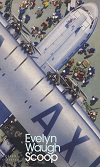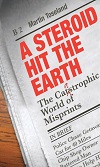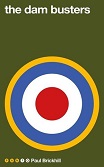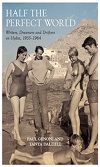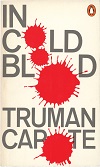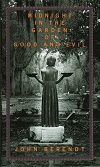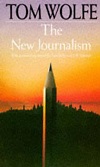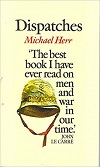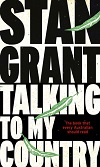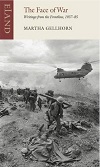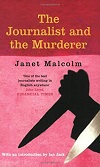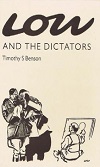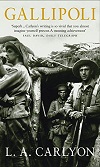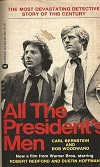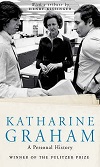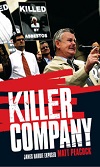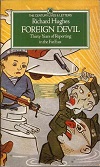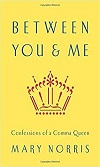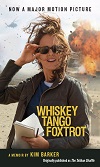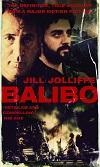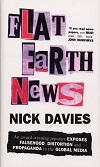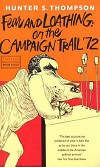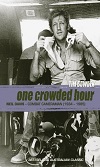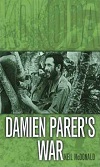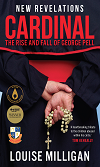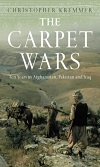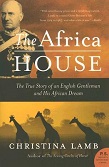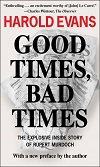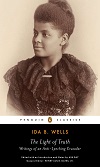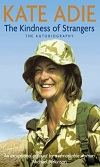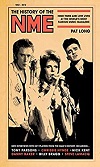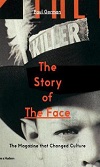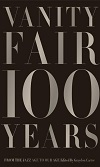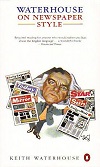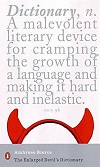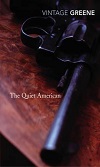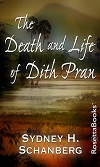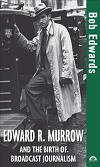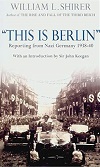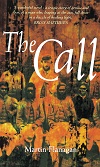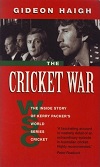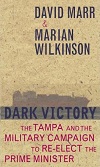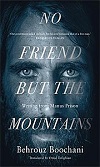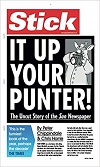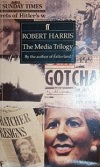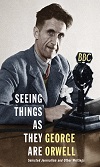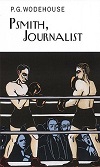Shelf company - top journalism books
Read all about it! Sit down with a good book.
Almost every journalist reckons they have a book in them. Some get around to writing them. Some probably shouldn’t. Here are a few books by or about journalists and journalism. Most are not recent or runaway best sellers so they could be hard to find.
The list is not definitive. It is not a catalogue of the best. It’s simply a list. So don’t write to us about what’s here or what’s not. Just read another book...
Scoop by Evelyn Waugh
This satire bursts any pretensions about journalism. A newspaper’s nature writer (“Feather-footed through the plashy fen passes the questing vole”) is sent to cover “a very promising little war”. Based, up to a point, on Waugh’s reporting of the Italian invasion of Abyssinia.
A Steroid Hit the Earth by Martin Toseland
Subtitled “A Celebrtion (sic) of Misprints, Typos and other Howlers”, this book catalogues those mistakes that went through to reader. Of course there’s the holy howler of urging people to commit adultery by omitting “not” from the seventh commandment.
The Great Escape, The Dam Busters, Reach for the Sky by Paul Brickhill
Brickhill, the son of an Australian Journalists’ Association (AJA) official, wrote three extraordinary paeans to heroic deeds in the Second World War. All three were filmed and have become cinema classics. Brickhill chose excellent tales to tell and told them well.
Half the Perfect World: Writers, Dreamers and Drifters on Hydra: 1955-1964 by Paul Genoni and Tanya Dalziell
George Johnston, Charmian Clift, Leonard Cohen and Marianne Ihlen – what more could you want? Impoverished ex-pats flee to the promise of an idyllic colony of artists only to encounter frustration, thwarted ambition… and eventually mixed success.
In Cold Blood by Truman Capote
A pioneering example of novelised non-fiction, this is the second best-selling true crime book (after Helter Skelter). Capote fabricated dialogue and changed facts about the murder of a family of four in Kansas but long-form journalism owes much to this remarkable work.
Midnight in the Garden of Good and Evil by John Berendt
This Southern Gothic true crime tale by a former New York magazine editor is set in Savannah and centres on a murder intermingled with an array of eccentric characters. It spent 216 weeks on the top of the New York Times bestseller list – a record.
The New Journalism by Tom Wolfe and E.W. Johnston
Following on from Capote and Berendt, this anthology provides more examples of writers utilising the devices of fiction to propel a non-fiction story, often with the journalist a player in the drama. The overuse of the first-person singular pronoun while reporting on someone else can get tedious.
Dispatches by Michael Herr
Herr wrote the narration for Apocalypse Now and co-wrote the script for Full Metal Jacket – some of the incidents in those films originally appeared in this book. Dispatches is a part-fiction example of New Journalism that captures all the terror and hyper-madness of the Vietnam War.
Talking To My Country by Stan Grant
Grant’s documentary on Adam Goodes, The Australian Dream, won the 2019 Walkley Documentary Award. Earlier, the treatment of Goodes led Grant to write this passionate and thoughtful examination of racism in Australia and the lasting hurt it inflicts on First Nations' peoples. It won the Walkley Book Award in 2016.
The Face of War by Martha Gellhorn
This is a collection of almost 50 years of Gellhorn’s magazine journalism covering the Spanish Civil War right through to the Central American insurgencies of the 1980s. An outstanding writer with a brilliant command of prose, Gellhorn was also married to some writer bloke for four years.
The Journalist and the Murderer by Janet Malcolm
A study of the morality of journalism. Joe McGinniss wrote profiles of murderer Dr Jeffrey Macdonald, befriending him while convinced of his guilt. Malcolm writes: “Every journalist who is not too stupid or too full of himself to notice what is going on knows that what he does is morally indefensible.”
Low and the Dictators by Timothy S. Benson
New Zealand-born cartoonist for Britain’s Evening Standard, David Low is considered one of the finest political lampoonists. Held in particular high regard are these cartoons created in the lead-up to the Second World War skewering Mussolini, Stalin, Franco and Hitler while admonishing the appeasement policies of the Chamberlain Government. Low also created Colonel Blimp.
Gallipoli by Les Carlyon
Australia’s first major military encounter, and its failure, has occupied Australian journalists from the outset, from AJA founding members Charles Bean and Keith Murdoch through to Alan Moorehead. Carlyon’s take is a thorough examination of the campaign that captures the humanity of this ghastly battle in breathtakingly beautiful prose.
All the President’s Men by Bob Woodward and Carl Bernstein
It's said it took Robert Redford seeking film rights to the story that finally prompted “Woodstein” to write the book. Courageous whistleblowers and dogged investigative journalism ensure the truth comes out after a clumsy office break-in, leading a paranoid president to engage in a catastrophic cover-up.
Personal History by Katharine Graham
Graham was an unlikely owner and publisher of a media group but she led a staunch defence of the Washington Post following publication of the Pentagon Papers and again during the Watergate scandal, even after a vicious personal threat made by US Attorney-General John Mitchell.
Killer Company: James Hardie Exposed by Matt Peacock
The ABC investigative journalist fought hard to tell the story of the Australian asbestos industry and the harm it was doing to its workers and customers. This exposure of the corporate tactics designed to hide the risk of asbestosis is an indictment of corporate greed and morality.
Foreign Devil: Thirty Years of Reporting in the Far East by Richard Hughes
Australian foreign correspondent Dickie Hughes had an international scoop in 1956, interviewing British defectors Donald Maclean and Guy Burgess in Moscow. Hughes was the model for Ian Fleming's "Dikko" Henderson in You Only Live Twice and "Old Craw" in John le Carré's The Honourable Schoolboy.
Between You & Me: Confessions of a Comma Queen by Mary Norris
“Pure porn for word nerds” is how the Washington Post reviewed this memoir by New Yorker copy editor Norris. Awarded Book of the Year, it is “a rollicking adventure into the origins of the apostrophe, the proliferation of profanity in American culture, and everything in between.”
Whiskey Tango Foxtrot by Kim Barker
Originally titled The Taliban Shuffle: Strange Days in Afghanistan and Pakistan, WTF is television producer Barker’s account of her work as a foreign correspondent. A mix of comedy and drama, it was filmed in 2016 with Tina Fey playing Barker.
Balibo by Jill Jolliffe
How can six Australian journalists be murdered without the killers facing justice? Why are journalists’ lives so cheap? “If justice is to follow from the sad events of Balibo, Australians should examine the history presented here and apportion blame where it belongs – whether in Jakarta or Canberra…”
Flat Earth News by Nick Davies
Guardian journalist Davies unearthed the phone-hacking scandal. This book looks at media practice with Davies warning that British media outlets have increasingly become caught up in bias, corruption, entrapment, racism and manufactured news – and thereby manipulating their audiences.
Fear and Loathing on the Campaign Trail ‘72 by Hunter S. Thompson
Thompson’s serialisation in Rolling Stone of the McGovern challenge to the re-election of President Nixon is a landmark in political campaign journalism. But it is also a savage study into the failure of the media pack to scrutinise without pandering to politicians.
One Crowded Hour by Tim Bowden
ABC journalist Bowden unknowingly began writing this biography of his friend, combat cameraman Neil Davis, on the very day that Davis was killed in an attempted military coup in Bangkok. A life packed full of adventure, danger and courage is brilliant captured by Bowden.
Damien Parer’s War by Neil McDonald
You’ve probably seen it countless times. That footage of Australian troops fighting in New Guinea was most likely shot by Parer, a pioneering documentary maker. His full-length newsreel “Kokoda Front Line!” won Australia’s first Academy Award. Parer was killed on the island of Pelelliu in 1944.
Cardinal: The Rise and Fall of George Pell by Louise Milligan
Winner of the Walkley Book Award, Milligan gave voice to complainants who said they had been abused by Australia’s most prominent Catholic. As a child sexual abuse survivor told Milligan: “Truth is the child of time.”
The Carpet Wars by Christopher Kremmer
Beginning with his reporting on Afghanistan at war, Kremmer uses the manufacture of and trade in the rugs, kilims and carpets of Central Asia to demonstrate how the significant cultural stories of the region from Iraq to Pakistan have been documented in fabric.
The Africa House by Christina Lamb
Lamb has a distinguished career as a foreign correspondent in Central Asia. This story tells of Stewart Gore-Browne, a British Army officer who replicated an incongruous English country estate in Northern Rhodesia (now Zambia). Having fallen into ruins at the time of writing, Shiwa Ng'andu has since been restored by Gore-Browne's grandson.
Good Times, Bad Times by Harry Evans
Evans’ angry account looks at his editorship of The Sunday Times and, for a brief period, The Times. It hinges on the takeover of the group by News Corporation. Evans also records some of the great news stories covered by the papers.
The Light of Truth by Ida B. Wells
Seventy years before Rosa Parks, black investigative journalist Wells was thrown off a train for refusing to give up her seat. Wells investigated hate crime and this anthology includes her long-form works: Mob Rule in New Orleans – Robert Charles and His Fight To The Death, Southern Horrors – Lynch Law In All Its Phases and A Red Record.
The Kindness of Strangers by Kate Adie
An autobiography by the former BBC chief news correspondent, Adie’s career has taken her from the siege of the Iranian Embassy in London through to encounters with Colonel Muammar Ghaddafi and Radovan Karadžić.
The History of the NME: High Times and Low Lives at the World's Most Famous Music Magazine by Pat Long
When the Accordian Times merged with the Musical Express in 1946 there was no hint that the new publication would evolve to become eyewitness to decades of change in popular culture. This account is about the journalists and the newspaper and how it rode the waves as each new fad and fashion replaced the old.
The Story of The Face: The Magazine That Changed Culture by Paul Gorman
Like Warhol and Wilcock's Interview, The Face is a pop culture handbook. Its first incarnation was 1980-2004 (it's been revived this year). Examining its unconventional approach to reporting/generating the latest fad and displaying inventive graphic design, Gorman analyses creator Nick "I never had a strategy meeting" Logan's leadership, which encouraged the creation of new typefaces and took on untried contributors.
Vanity Fair 100 years; From the Jazz Age to Our Age edited by Graydon Carter
Stumbling during the Great Depression, Vanity Fair was revived in time to catalogue the 1980s excesses (with revenues the envy of every publisher) under editor-in-chief Tina Brown. Conde Nast's much loved masthead remains a blend of fashion, celebrity, commentary and reportage, celebrated in this massive and richly illustrated collection. Includes work by photographers Annie Leibovitz, Bruce Weber, Herb Ritts and an army of illustrators.
Waterhouse on Newspaper Style by Keith Waterhouse
Written in 1989 to help steer British Daily Mirror journalists away from writing “tabloidese”. Tabloid newspapers don’t use language the way normal people do. Only a tabloid would write: “a love rat having a sex romp in a vice den before fleeing to a secret love nest”. Or is that click-bait now?
The Enlarged Devil's Dictionary by Ambrose Bierce
Journalist Bierce, who disappeared in Mexico in 1913, began writing this lexicon of satirical definitions in 1875, adding to it in fits and starts. The dictionary has been ranked among the 100 greatest masterpieces of American literature. "Reporter: a writer who guesses his way to the truth and dispels it with a tempest of words." Bierce also wrote the civil war short story An Occurrence at Owl Creek Bridge.
The Quiet American by Graham Greene
Before the US intervention in Vietnam, middle-aged foreign correspondent Thomas Fowler is caught in a love triangle. As war creeps ever closer, his young lover Phuong is wooed by a idealistic and seemingly naïve American aid worker. It was filmed by Phillip Noyce in 2001 with Michael Caine nominated for an Oscar.
The Death and Life of Dith Pran by Sydney H. Schanberg
New York Times photojournalist Pran worked alongside his reporting partner Schanberg, covering the fall of Cambodia to the Khmer Rouge. This book tells of Pran’s four-year struggle to survive the genocide. It was filmed using Pran’s own phrase for what he experienced: The Killing Fields.
Edward R. Murrow and the Birth of Broadcast Journalism by Bob Edwards
Murrow knew how to engage an audience. At the height of the London blitz, his radio broadcast began: “I’m standing on a rooftop looking out over London. At the moment everything is quiet. For reasons of national as well as personal security, I’m unable to tell you the exact location from which I’m speaking.” Murrow's gravitas ensured audiences trusted broadcast news just as they had done with print.
"This is Berlin": Reporting from Nazi Germany 1939-40 by William L. Shirer
Given the rise of populist nationalism around the world, reading Shirer (author of The Rise and Fall of the Third Reich) just now is, perhaps, a timely history lesson. Like Murrow, Shirer was a broadcast journalist for CBS and witnessed the extraordinary and deeply disturbing transformation of Europe as it slid into war.
The Call by Martin Flanagan
An "imagining" of the brief but crowded life of Tom Wills. He grew up among the Djab Wurring people and was educated in England. He went on to play pivotal roles in the development of Australian cricket and the creation of Aussie Rules footy. In the aftermath of the Cullin-la-ringo massacre, he was afflicted with PTSD. A troubled and forgotten man who deserves to be remembered.
The Cricket War by Gideon Haigh
Media boss Kerry Packer launched cricket's World Series in 1977, transforming a staid sport of tradition and rigidity into an entertainment powerhouse that continues to reinvent itself in multiple formats of the game. But the battle that split cricket was fiercely fought and there were many casualties.
Dark Victory by David Marr and Marion Wilkinson
This is how Australia ventured down the path that led to the locking up asylum seekers on Manus Island and Nauru for more than six years. Dark Victory explains how the government sent in the SAS to seize the Norwegian freighter MV Tampa, delivering John Howard a third election victory. A deeply troubling tale where politicians deployed their baser instincts.
No Friend But the Mountains by Behrouz Boochani
Journalist Boochani's book tells of his dangerous journey to Australia, escaping persecution in Iran, only to be locked up on Manus Island. Boochani's story, translated and transcribed painstakingly one text message at a time by a colleague outside the detention centre, reveals how the ongoing detention dehumanises the jailers and destroys the detained.
Stick It Up Your Punter!: The Uncut Story of the Sun Newspaper by Peter Chippindale and Chris Horrie
Three decades in the life of one of Britain's most notorious newspapers from its purchase as a vehicle, together with The News of The World, for Rupert Murdoch's ambitions in the UK tathrough to the tumultuous Kelvin Mackenzie era, capturing the newspaper's coverage of the Falklands war and its shameful take on the Hillsborough disaster.
The Media Trilogy by Robert Harris
If you can find the trilogy, inside are such delights as Selling Hitler - The Story of the Hitler Diaries; Gotcha! The Media, The Government and The Falklands Crisis and Good and Faithful Servant about Margaret Thatcher’s press secretary.
Seeing Things As They Are: Selected Journalism by George Orwell
You can't leave out Eric Blair from a list such as this. Orwell's use of concise, clear prose is a lesson in how to communicate to an audience and keep them engaged. This collection includes "Books v. Cigarettes", excerpts from the radio broadcasts of "As I Please", book reviews and critiques, plus essays including "In Defence of P.G. Wodehouse". Which brings us to...
Psmith, Journalist by P.G. Wodehouse
Evelyn Waugh said of Wodehouse: "One has to regard a man as a Master who can produce on average three uniquely brilliant and entirely original similes on each page." Here, Psmith accompanies his friend Mike to New York on a cricketing tour. While there, he sub-edits Cosy Moments, campaigns against slums, promotes a boxer and takes on gangsters. How do you pronounce Psmith? “The ‘p’ is silent, as in 'pshrimp'”.
